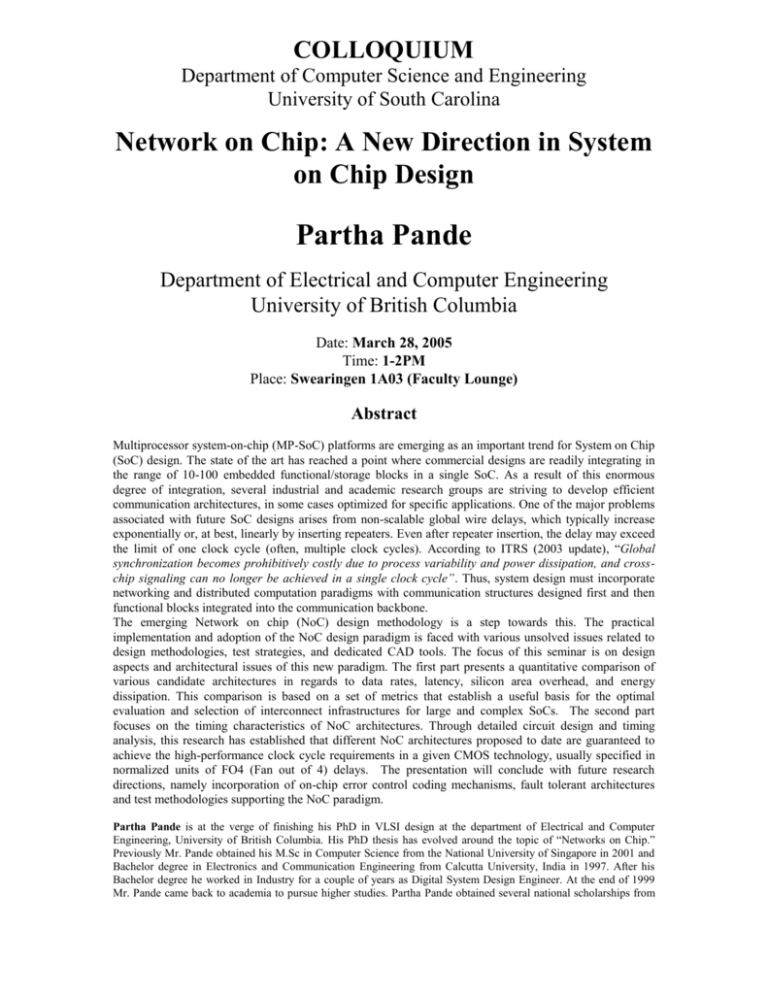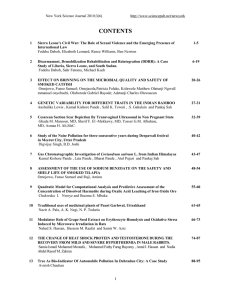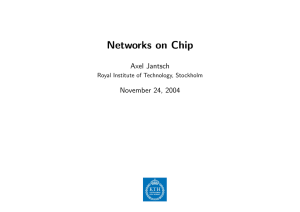Abstract - Computer Science & Engineering
advertisement

COLLOQUIUM Department of Computer Science and Engineering University of South Carolina Network on Chip: A New Direction in System on Chip Design Partha Pande Department of Electrical and Computer Engineering University of British Columbia Date: March 28, 2005 Time: 1-2PM Place: Swearingen 1A03 (Faculty Lounge) Abstract Multiprocessor system-on-chip (MP-SoC) platforms are emerging as an important trend for System on Chip (SoC) design. The state of the art has reached a point where commercial designs are readily integrating in the range of 10-100 embedded functional/storage blocks in a single SoC. As a result of this enormous degree of integration, several industrial and academic research groups are striving to develop efficient communication architectures, in some cases optimized for specific applications. One of the major problems associated with future SoC designs arises from non-scalable global wire delays, which typically increase exponentially or, at best, linearly by inserting repeaters. Even after repeater insertion, the delay may exceed the limit of one clock cycle (often, multiple clock cycles). According to ITRS (2003 update), “Global synchronization becomes prohibitively costly due to process variability and power dissipation, and crosschip signaling can no longer be achieved in a single clock cycle”. Thus, system design must incorporate networking and distributed computation paradigms with communication structures designed first and then functional blocks integrated into the communication backbone. The emerging Network on chip (NoC) design methodology is a step towards this. The practical implementation and adoption of the NoC design paradigm is faced with various unsolved issues related to design methodologies, test strategies, and dedicated CAD tools. The focus of this seminar is on design aspects and architectural issues of this new paradigm. The first part presents a quantitative comparison of various candidate architectures in regards to data rates, latency, silicon area overhead, and energy dissipation. This comparison is based on a set of metrics that establish a useful basis for the optimal evaluation and selection of interconnect infrastructures for large and complex SoCs. The second part focuses on the timing characteristics of NoC architectures. Through detailed circuit design and timing analysis, this research has established that different NoC architectures proposed to date are guaranteed to achieve the high-performance clock cycle requirements in a given CMOS technology, usually specified in normalized units of FO4 (Fan out of 4) delays. The presentation will conclude with future research directions, namely incorporation of on-chip error control coding mechanisms, fault tolerant architectures and test methodologies supporting the NoC paradigm. Partha Pande is at the verge of finishing his PhD in VLSI design at the department of Electrical and Computer Engineering, University of British Columbia. His PhD thesis has evolved around the topic of “Networks on Chip.” Previously Mr. Pande obtained his M.Sc in Computer Science from the National University of Singapore in 2001 and Bachelor degree in Electronics and Communication Engineering from Calcutta University, India in 1997. After his Bachelor degree he worked in Industry for a couple of years as Digital System Design Engineer. At the end of 1999 Mr. Pande came back to academia to pursue higher studies. Partha Pande obtained several national scholarships from the Government of India for academic excellence. In addition to this he received the International Graduate student scholarship from the National University of Singapore.











